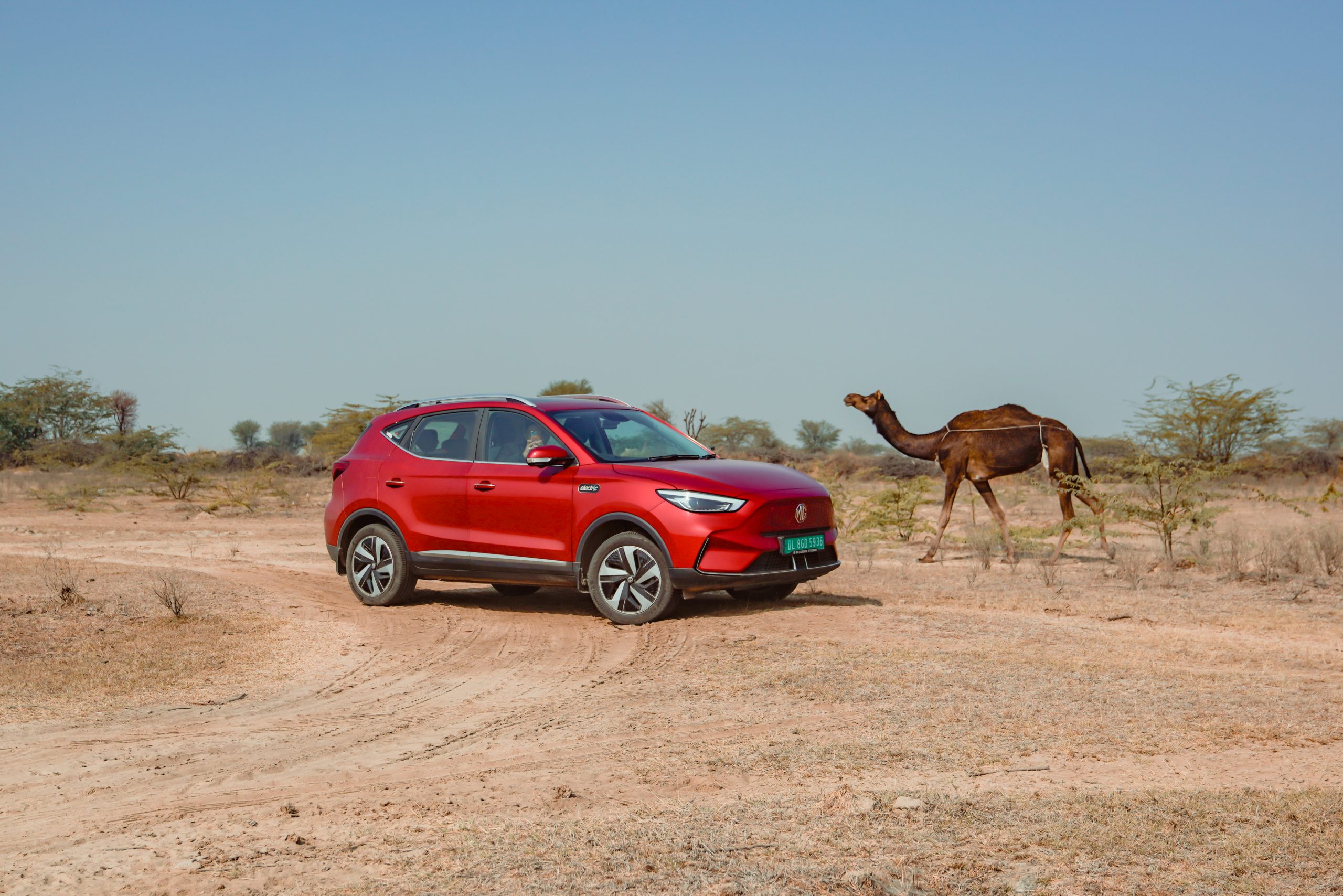While electric vehicle sales are pacing up exponentially, they still account for a small chunk of the colossal Indian automotive landscape. There are multiple reasons limiting the sales of electric vehicles, one of which is range anxiety. To curb the feeling of being stranded on the roadside, MG keeps doing intercity drives to showcase the potential of its offering — the ZS EV. We recently went to Sambhar Lake in Rajasthan with the ZS EV and here comes our experience with it.


Our journey was flagged off from MG’s experience centre in Gurugram and we proceeded to the Delhi-Mumbai expressway. The battery SOC was 93% upon starting the journey and some 150 odd kilometres into the drive, the SOC dropped down to a staggering 15%! I have driven the ZS EV before on multiple occasions and it always delivered good efficiency. I would admit that we were not really gentle on the throttle, which likely did rob away a good chunk of range.
Another reason could be the low ambient temperatures we are beginning to acclimate to in the NCR region. Car batteries, or any batteries in general, need an optimum temperature to work efficiently. Any disparity in temperature results in lower efficiency than usual. Nonetheless, we stopped at the rest area on the highway to juice up the batteries but all four chargers were occupied.
After waiting about an hour, we plugged the ZS EV into a 30kW DC fast charger, which charged our car to 53 per cent before going kaput. Our search for another charger began since the SOC wasn’t enough to help us reach to our destination for the night. Thankfully, the Delhi-Mumbai expressway has a good number of fast chargers and we managed to plug into one around 50km ahead.
However, our journey faced new obstacles as we de-routed from the highway and proceeded towards Sambhar, which is a small town in Jaipur. The roads were non-existent and full of ruts and potholes. We sensed the lack of charging infrastructure and maximised the use of brake energy regeneration. In Level 3, which is the most aggressive setting for the regeneration, the ZS EV recuperates a good amount of energy back into the battery pack, thus extending the range, albeit by a small margin.
But it was not enough to alleviate the range anxiety. The battery SOC stood at 18% when we arrived at our destination for the night. With no fast charging infrastructure in sight, we convinced the property owner to plug our cars into the 15 amp socket. A few cars from the convey did manage to take benefit from charging overnight, while the rest were taken to the nearest fast charger, which was over 35 km away!
Nonetheless, the night was spent under the vast starry sky surrounding a bonfire on the Sambhar Lake. The large expanse of nothingness and chilly air was the perfect ambience to unfold fascinating stories and experiences. The weather was clear and we did manage to gaze at the stars and one was arguably fortunate enough to catch a shooting star as well.
The next day in the morning, the experience I had salivating ever since the invite dropped in my inbox was about to take place — going flat out on the salt flats of Rajasthan. There were no restrictions or safety concerns, just me and the car. However, the ZS EV doesn’t let you turn off the traction control system, thus limiting the outright acceleration on loose sand. What felt like fun on the inside seemed nothing but a grown-up kid forming circles on the outside. Sigh, it was fun nonetheless. Click here to catch a video glimpse of the experience.
Post the shenanigans, our next stop was in Jaipur where we charged our cars before arriving in Gurugram. We found a fast charger in a shopping mall basement, but it was already occupied by two cars. After waiting for close to an hour, we plugged the ZS EV and charged it to 100%, which took another hour.
We had lost the patience to stop mid-way for another charging stop, hence decided to go from Jaipur to Gurugram non-stop. The indicated range at 100% SOC stood at a smidge over 400km. We maintained a cruising speed of 80-85kmph on the highway and only stopped for dinner on the highway. When we reached Gurugram, the ZS EV still had a 60-70km driving range.
This road trip presented unique challenges over the ones we have faced before. I had only heard of range anxiety but this trip made me experience it first-hand, and trust me, that feeling isn’t good. We have reached to a stage where electric vehicles are capable of delivering over 400km of realistic range and charging times are also fairly respectable, if not impressive. The only fly in the ointment is the scarcity of dependable charging infrastructure, which serves as the biggest deterrent for the masses.

